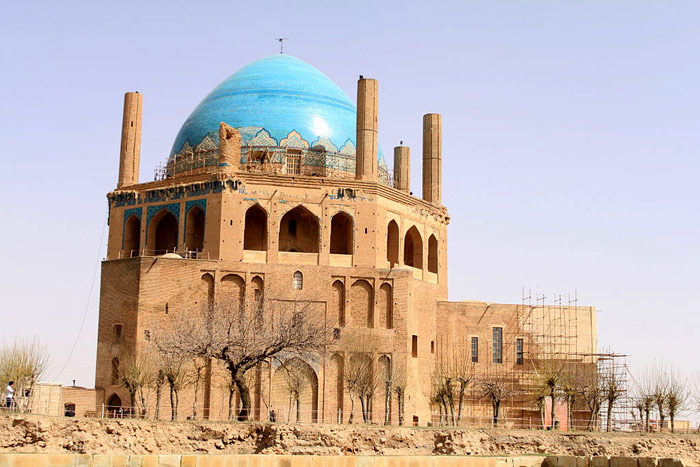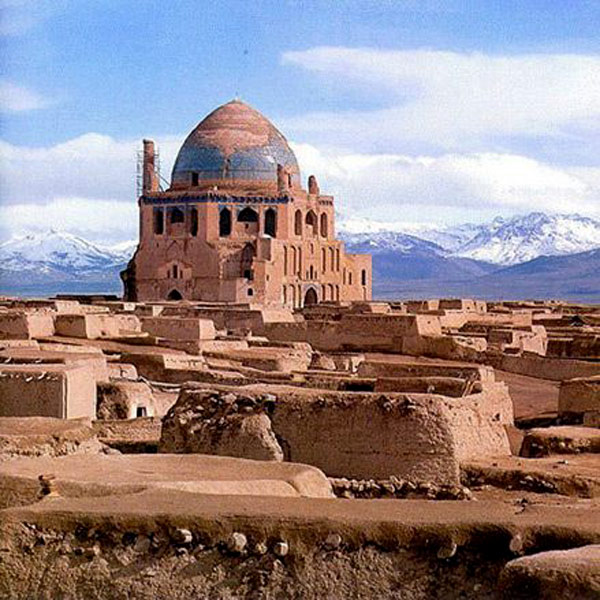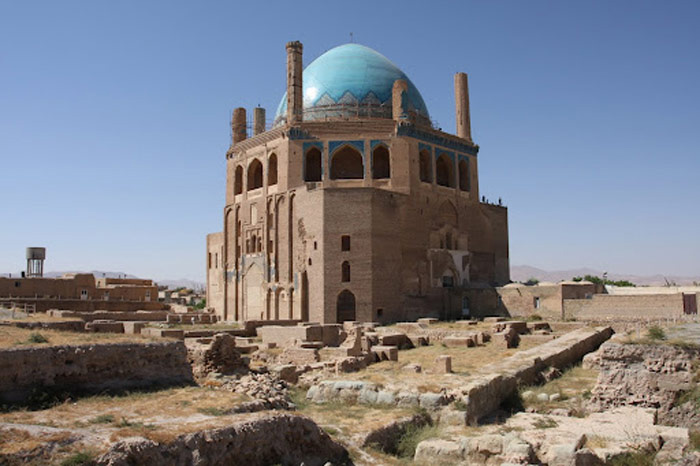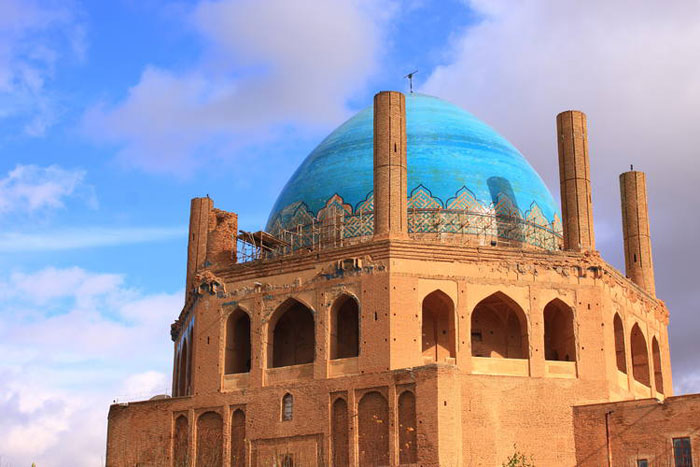Dome Soltaniyeh - World Cultural Heritage in Iran
Unesco's Science, Education and Cultural Organization has recognized Iran's Soltaniyeh Dome as a World Cultural Heritage in 2005.

Soltaniyeh dome in Iran
Soltaniyeh is also known as Sa'idiyeh , a city and capital of Soltaniyeh, Abhar, Zanjan province in Iran. The population of this city is quite small, about 6,000. Soltaniyeh is located about 240 km northwest of Tehran.

This place used to be the capital of the Khan Quoc suspense that ruled Persia in the 14th century. Han Khan was a khanate of Mongolia founded in Persia around the 13th century. Based on the initial basis of Genghis Khan 's campaigns, then his grandson followed suit. The time of flourishing development, the khanate stretches to include most of Iran, Iraq, Afgahanistan, Turkmenistan, Armenia, Azerbaijan, Ghana, Turkey and Pakistan today. The suspicion of Han Quoc at the beginning of the establishment accepted many religions, but the people were mostly in love with Buddhism and Christianity. However, the rulers of the Han Chinese Medicine from 1295 onwards worshiped Islam.
 The tomb of King Ilkhan Oljettu also known as the Dome of Soltaniyeh has been damaged and degraded pretty much after thousands of years of existence.
The tomb of King Ilkhan Oljettu also known as the Dome of Soltaniyeh has been damaged and degraded pretty much after thousands of years of existence.
Soltaniyeh was built during the period from 1302 to 1312, the capital of the Ilkhanid dynasty . This structure is the tomb of the eighth king of Ilkhanid dynasty - Ilkhan Oljeitu . His mother was a Christian woman and was baptized like Nicholas. Then the king became a Buddhist before turning to Islam.

At the time of his reign, King Ilkhan Oljeitu intended to bring Soltaniyeh into a big and flourishing city in the world, but it was not expected to be as he wanted and now the city has become a desolate and contained place. historical sites.
The center of the city of Soltaniyeh is the relic of Ilkhan Oljeitu , also known as Muhammad Khodabandeh and the traditional name that people here often refer to as the Soltaniyeh Dome .

This tomb built in 10 years so far is the oldest (domed) tomb in Iran. In the Muslim world, the importance of the Soltaniyeh Dome is comparable to the Brunelleschi Dome designed by Filippp Brunelleschi. The dome Soltaniyeh is also one of the largest dome in the world, if limited to the dome made of bricks, the Soltaniyeh Dome is ranked third in the world after the dome of Florence church and Hagia Sohia church.

Not only is the architecture beautiful, with many artistic values as well as history, the Dome of Soltaniyeh also paved the way for the style of building the dome in the Muslim world. Historical researchers say that the idea of design and construction of the Soltaniyeh Dome is the inspiration for another famous world heritage, which is the Taj Mahal tomb in India.
 Although the outer part has been peeled almost entirely, the interior decorations still remain intact.
Although the outer part has been peeled almost entirely, the interior decorations still remain intact.
So far, through hundreds of years of existence, the Dome of Soltaniyeh has been damaged, degraded much over time. Most of the outer decoration has peeled off. However, the interior is still relative to the precious paintings and porcelain mosaics .

Scientists estimate that the tomb of the tomb itself (aka Soltaniyeh Dome) weighs over 200 tons with a height of 49 meters. Only the above two parameters are enough to see somewhat the grandiose and grandeur of the world heritage . The astonishing thing is that the technique that created this massive project was completely handcrafted based on the manpower and craftsmanship of thousands of years ago.

Dome Soltaniyeh is recognized by Unesco under criteria (ii), (iii), (iv)
Criterion (ii): The dome Soltaniyeh is a premise, paving the way for the dome architecture in Islamic architectural works in Asia. What is more special is the structure of the construction of the exterior wall and the interior with various decorative and complex themes.
Criterion (iii): The dome Soltaniyeh is located in the center of the old dynasty of the Ilkhanid dynasty - a special testament to the history of this dynasty.
Criterion (iv): The dome Soltaniyeh is an excellent representation of the development of Persian architecture and the creativity and talent of craftsmen thousands of years ago.
- Pasargadae - World Cultural Heritage in Iran
- Cultural landscape of Bam - World Cultural Heritage in Iran
- Bisotun archaeological area
- Secrets - World Cultural Heritage in China
- Di Hoa Vien - World Cultural Heritage in China
- The territory of Roy Mata - World Cultural Heritage at Vanuat
- Zvartnots site - World cultural heritage in Armenia
- Archaeological area Takht-E Soleyman
- Nesvizh Castle - World cultural heritage in Belarus
- Angkor - World Cultural Heritage in Cambodia
- Minaret Tower in Jam
- Ho Dynasty - World Cultural Heritage
 Suzhou classic bonsai garden - China
Suzhou classic bonsai garden - China Chau Nguyen Dynasty
Chau Nguyen Dynasty Thai Son Mountain - World Wonder
Thai Son Mountain - World Wonder Ancient villages of Shirakawa-go and Gokayama
Ancient villages of Shirakawa-go and Gokayama